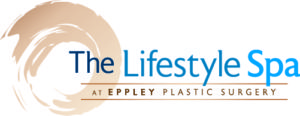
I have embraced the use of massage therapy since my hospital-based spa, the Lifestyle Spa in Indianapolis, opened the first location in 2004. Having regular access to massage therapy has allowed me to integrate it as part of many patient’s postoperative care regimens. Massage can improve a more rapid return of lymphatic outflow from the surgery site, which reduces swelling and the clearance of bruising faster. This is most valuable in body surgery such as liposuction and tummy tucks. However, it can also be useful afte facial surgery, even if the surgery site is not directly massaged. I usually have my patients begin massage sessions no sooner than 3 weeks after surgery and have a patient undergo them once a week for 4 to 6 weeks. While some patients may initially fear that massages may be too ‘rough’, they quickly find out that a gentle touch technique is used and they start to see its benefits immediately after the first session.
The integration of a touch form of therapy, such as massage, after the trauma of surgery has a great psychological benefit as well. It provides a compassionate and tender form of therapy while the patient is in the healing state. It reflects well on the practice and the plastic surgeon. Some patients after getting postoperative massage therapy become regular massage patients thereafter.
Dr Barry Eppley
Indianapolis, Indiana


